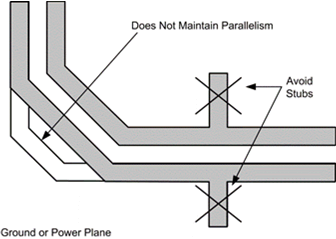ZHCSNO0B April 2021 – November 2021 DP83561-SP
PRODUCTION DATA
- 1 特性
- 2 应用
- 3 说明
- 4 Revision History
- 5 Pin Configuration and Functions
- 6 Specifications
-
7 Detailed Description
- 7.1 Overview
- 7.2 Functional Block Diagram
- 7.3
Feature Description
- 7.3.1 Copper Ethernet
- 7.3.2 MAC Interfaces
- 7.3.3
Auto-Negotiation
- 7.3.3.1 Speed and Duplex Selection - Priority Resolution
- 7.3.3.2 Master and Slave Resolution
- 7.3.3.3 Pause and Asymmetrical Pause Resolution
- 7.3.3.4 Next Page Support
- 7.3.3.5 Parallel Detection
- 7.3.3.6 Restart Auto-Negotiation
- 7.3.3.7 Enabling Auto-Negotiation Through Software
- 7.3.3.8 Auto-Negotiation Complete Time
- 7.3.3.9 Auto-MDIX Resolution
- 7.3.4 Speed Optimization
- 7.3.5 Radiation Performance
- 7.3.6 WoL (Wake-on-LAN) Packet Detection
- 7.3.7 Start of Frame Detect for IEEE 1588 Time Stamp
- 7.3.8 Cable Diagnostics
- 7.3.9 Clock Output
- 7.4 Device Functional Modes
- 7.5
Programming
- 7.5.1
Serial Management Interface
- 7.5.1.1
Extended Address Space Access
- 7.5.1.1.1 Write Address Operation
- 7.5.1.1.2 Read Address Operation
- 7.5.1.1.3 Write (No Post Increment) Operation
- 7.5.1.1.4 Read (No Post Increment) Operation
- 7.5.1.1.5 Write (Post Increment) Operation
- 7.5.1.1.6 Read (Post Increment) Operation
- 7.5.1.1.7 Example of Read Operation Using Indirect Register Access
- 7.5.1.1.8 Example of Write Operation Using Indirect Register Access
- 7.5.1.1
Extended Address Space Access
- 7.5.2 Interrupt
- 7.5.3 BIST Configuration
- 7.5.4 Strap Configuration
- 7.5.5 LED Configuration
- 7.5.6 LED Operation From 1.8-V I/O VDD Supply
- 7.5.7 Reset Operation
- 7.5.1
Serial Management Interface
- 7.6 Register Maps
- 8 Application and Implementation
- 9 Power Supply Recommendations
- 10Layout
- 11Device and Documentation Support
- 12Mechanical, Packaging, and Orderable Information
10.1.1 Signal Traces
PCB traces are lossy and long traces can degrade the signal quality. Traces must be kept short as possible. Unless mentioned otherwise, all signal traces should be 50-Ω single-ended impedance. Differential traces should be 50-Ω single-ended and 100-Ω differential. Take care that the impedance is constant throughout. Impedance discontinuities cause reflections leading to EMI & signal integrity problems. Stubs must be avoided on all signal traces, especially the differential signal pairs. See Figure 10-1.
Within the differential pairs, the trace lengths must run parallel to each other and matched in length. Matched lengths minimize delay differences, avoiding an increase in common-mode noise and increased EMI.
Length matching is also important on MAC interface. All Transmit signal trace lengths must match to each other and all Receive signal trace lengths must match to each other.
Ideally, there should be no crossover or via on the signal paths. Vias present impedance discontinuities and should be minimized. Route an entire trace pair on a single layer if possible.
 Figure 10-1 Avoiding Stubs in a Differential Signal Pair
Figure 10-1 Avoiding Stubs in a Differential Signal PairSignals on different layers should not cross each other without at least one return path plane between them.
Coupling between traces is also an important factor. Unwanted coupling can cause cross talk problems. Differential pairs on the other hand, should have a constant coupling distance between them.
For convenience and efficient layout process, start by routing the critical signals first.